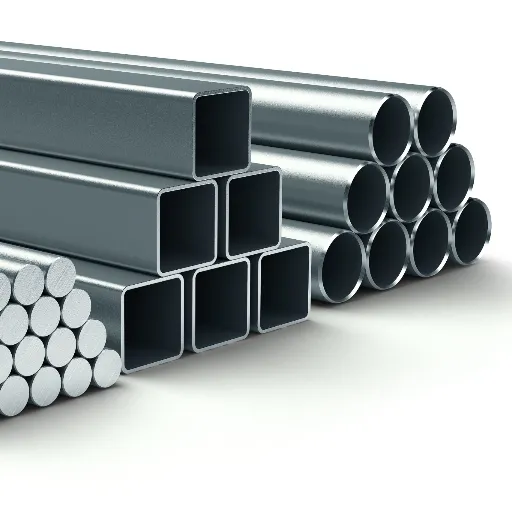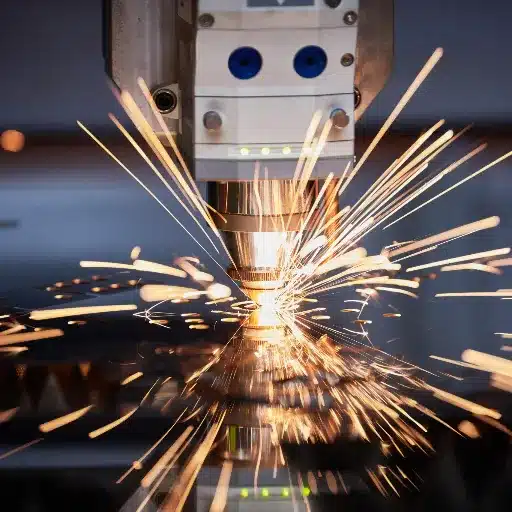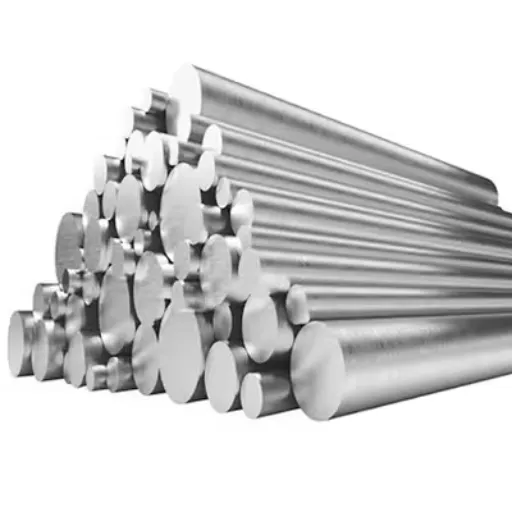Understanding the hardness of stainless steel is essential when considering which material to be used for the application. Given the working realms in construction, manufacture, or product designing, knowing the exact differences between grades such as 304, 316, and other austenitic types can hugely affect how your project will fare in the long run with respect to durability, performance, and longevity. The article reviews factors that largely affect the hardness of stainless steel. It also compares the most common grades featuring their own unique properties. By the time you have finished reading, you will have acquired enough knowledge to make an informed decision in selecting the most suitable grade of stainless steel for the task at hand.
Understanding Stainless Steel Hardness

Definition of Stainless Steel Hardness
The hardness of stainless steel means its capacity to resist deformation, indentation, or scratching when pressure is applied. In essence, the resistance is a measure of how well the material resists being worn in harsh environments and how durable it will be under stress. Hardness values are usually determined through standardized tests such as Brinell Hardness (HB), Rockwell Hardness (HR), or Vickers Hardness (HV), giving a measure of mechanical strength.
Hardness Comparison: 304 vs 316
| Grade | Hardness Range (HB) | Key Features |
|---|---|---|
| 304 | 123-201 HB | Most commonly used, versatile, affordable |
| 316 | 146-217 HB | Higher corrosion resistance, contains molybdenum |
For example, 304 stainless steel, one of the most commonly used grades, would generally be rated anywhere from about 123 to 201 HB, depending upon the exact composition and treatment. 316 stainless steel, rated higher for corrosion resistance, would probably appear in a similar range of hardness values, anywhere between 146-217 HB. These small differences can be attributed to small modifications in alloy content, like molybdenum in 316, which appears to somewhat increase relevant mechanical characteristics.
Factors Affecting Hardness of Stainless Steel
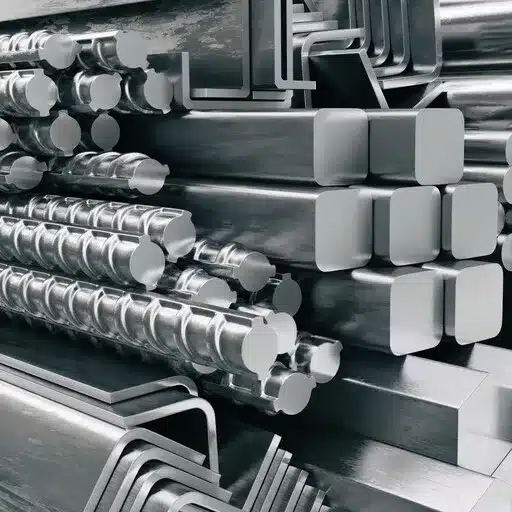
The hardness of stainless steel is influenced by several factors, such as the alloying elements, the heat treatment, and the working-based deformation processes. For example, if one adds more of an element such as carbon for hardness, one would strive to increase strength by heat treatment through microstructure design. Hard recrystallization deformation also increases hardness with deformation-based techniques such as rolling and hammering, which create dislocations in the crystal structure of the metal.
Alloy Composition and Its Impact
The composition of stainless steel alloys has a decisive influence on their hardness, strength, corrosion resistance, and, therefore, on their key characteristics. Chromium forms the main alloying constituent in stainless steel and normally constitutes at least 10.5% of the material. One could say that chromium is responsible for the passive surface film of chromium oxide that prevents the stainless steel from corrosion. Some research shows that normally with an increase in chromium content corrosion resistance is enhanced. For example, stainless steels with above 18% chromium are generally used in heavily corrosive environments.
Key Alloying Elements and Their Effects
| Element | Function | Impact on Properties |
|---|---|---|
| Chromium | Forms passive oxide film | Enhances corrosion resistance |
| Nickel | Increases toughness | Improves ductility and impact resistance |
| Molybdenum | Resists pitting corrosion | Enhanced chloride resistance |
| Carbon | Increases hardness | Enhances strength in martensitic grades |
| Nitrogen | Hardening agent | Improves pitting resistance |
Other important elements are nickel, molybdenum, carbon, and manganese with the remaining ones contributing to the hardness and performance of the alloy. Nickel increases toughness and favors formation of austenite; hence it gives improved ductility and impact resistance. Molybdenum furnishes resistance to pitting and crevice corrosion, especially in chloride-bearing environments. Carbon, although in very small amounts, serves an important function in martensitic grades to make hardness and strength possible, thus suitable for tool and cutting applications. Meanwhile, numbers of studies conducted in recent years proved the effect of nitrogen in hardening stainless steel and improving pitting resistance.
Heat Treatment Process
The optimum realization of mechanical and chemical properties is necessary to achieve special properties for a given service condition by subjecting treatment to a heat treatment process. These processes include controlled heating and cooling for imparting requisite properties to the material, such as enhanced hardness, increased ductility, wear resistance, and microstructures.
Major Heat Treatment Processes
Annealing
Annealing is performed to reduce hardness and improve machinability of metal; it also serves to relieve internal stresses. The metal is heated to a certain temperature, held for a period at that temperature to allow the necessary structural transformation to take place, and finally cooled very slowly, usually in a furnace. Annealing of steel might allow refinement of grain size and promotion of a uniform microstructure that results in improved tensile strength.
Quenching
In quenching, after heating at a certain temperature usually for a fairly short time, rapid cooling is carried out, generally in water, sometimes in oil or air. It is usually done when hardness is required, and the metal turns into the martensite phase.
Tempering
Tempering is usually done after quenching to reduce brittleness but retain hardness. Heat is applied to the hard metal again to a temperature lower than its critical temperature, usually between 150°C and 700°C, depending on the selected mechanical properties. For example, tempered steel offers an excellent balanced property of strength and toughness and is used for making tools and structural parts.
Normalization
Metals are heated above the recrystallization temperature of the material by normalization and they are cooled in the air. This operation restores ductility and removes the effects of work hardening. For example, steels that have been normalized at temperatures between 870°C and 980°C obtain good toughness and have a uniform grain structure.
Methods of Measuring Stainless Steel Hardness
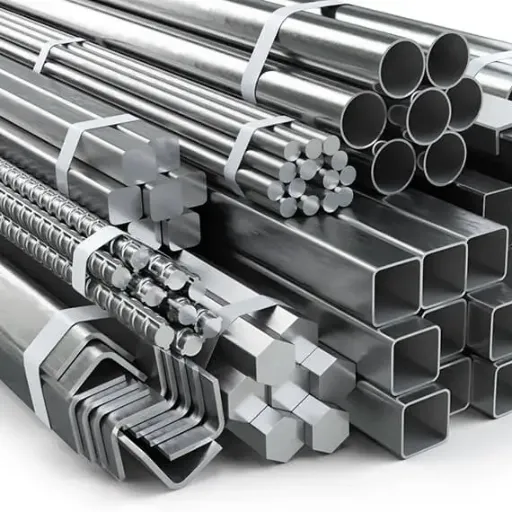
The hardness of stainless steel may be measured by standardized techniques such as Rockwell, Brinell, or Vickers. These methods usually impose a predetermined load on the object with an indenter and measure the resulting indentation to determine hardness.
Testing Method for Brinell Hardness
Being one of the older tests and one of the most commonly used tests for determining material hardness, the Brinell Hardness Test was introduced by Johan August Brinell in 1900. This test is suited for measuring the hardness of materials with coarse structure, non-homogeneous compositions, or dissimilar substrates that would otherwise deform on the surface. The hard steel or tungsten carbide ball, usually 10mm in diameter, is pressed into the test material under a specified load typically applied for ten to fifteen seconds.
Brinell Test Specifications
- Indenter: 10mm diameter steel or tungsten carbide ball
- Load Range: 500 to 3,000 kgf
- Duration: 10-15 seconds
- Standards: ASTM E10 and ISO 6506
- Calculation: BHN = Applied load (kgf) ÷ Surface area of indentation
The hardness value or the Brinell Hardness Number (BHN) is computed as the applied load in kilograms force divided by the surface area of the indentation, where the surface area is computed from formulas using the diameter of the ball and the diameter of the indentation. The standard loads vary from 500 to 3,000 kgf depending on the material tested and comply with ASTM E10 and ISO 6506 to ensure the credibility of the results.
Vickers Hardness Test
Being one of the most general hardness tests for materials of any kind, particularly metals and ceramics, the Vickers Hardness Test had the advantage of being precise and applicable to different types of materials. The test uses a pyramidal diamond-shaped indenter that is pressed into the test material under set stature loads; the resulting indentation is measured diagonally, and the Vickers Hardness Number (VHN) is derived from the force applied and size of the indentation.
Vickers Test Advantages
- Suitable for very small and very large specimens
- Broader range than Brinell or Rockwell tests
- Load range: Few grams up to 100 kilograms
- Applicable to coatings, thin films, and bulk materials
- Hardness range: 25-30 VHN (pure aluminum) to 800+ VHN (hardened tool steels)
One of the major advantages Vickers tests have over others is its suitability to very small specimens and very large specimens, with a much broader range than Brinell or Rockwell. Loads applied commonly range from a few grams up to 100 kilograms, thus making the test applicable to coatings, thin films, and bulk materials alike. Pure metals such as aluminum may have VHN values as low as 25-30, while hardened tool steels usually are above 800 VHN.
Applications in Industry
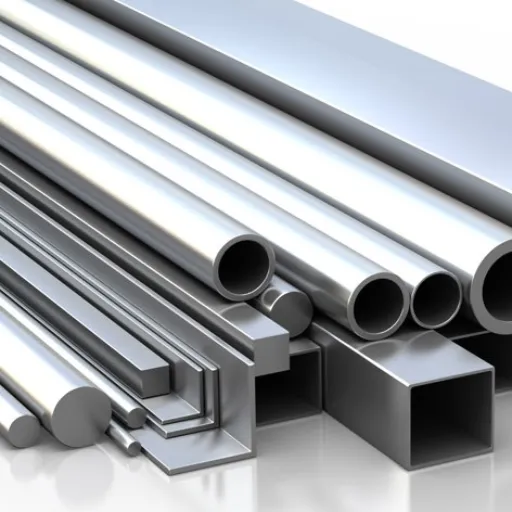
Use of 304 Stainless Steel in Kitchenware
In kitchenware manufacturing and related industries, the 304 stainless steel grade enjoys broad application owing to its extraordinary set of properties-high corrosion resistance, damage resistance, and ease of fabrication, among others. Being an austenitic stainless steel of the 300 series, it consists of approximately 18-20% chromium and 8-10.5% nickel, along with about 0.08% maximum carbon content. Such a combination ensures almost the highest resistance to oxidation and rusting, even when the metal is under long exposure to acidic or moist atmospheres such as those found in kitchen environments.
304 Stainless Steel Performance Data
| Property | Value | Benefit |
|---|---|---|
| Maximum Temperature | 870°C (1598°F) | Suitable for high-heat cooking |
| Ultimate Tensile Strength | 505 MPa | Excellent durability |
| Yield Strength | 215 MPa | Resists deformation |
| Surface Properties | Non-porous | Bacteria-free surfaces |
One of the factors that makes 304 stainless steel so highly preferred in the kitchen environment is the property of structure retention with time and maintaining a surface finish. For example, studies have shown that 304 stainless steel may be exposed to temperatures as high as 870°C (1598°F) without marked scaling; this temperature resistance enables the steel to be used in many different roles ranging over cookware, sinks, and food preparation surfaces. Its advantages are great too because it is non-porous, thereby allowing bacteria-free surfaces, an important consideration in culinary matters.
316 Stainless Steel in Marine Applications
316 stainless steel is considered in common parlance to be the most suitable type for service in marine environments because of its enhanced corrosive resistance properties in chloride-rich media, like seawater. The higher performance of 316 against the 304 is due to the enhanced addition of molybdenum (2 to 3% typically), which greatly enhances the resistance towards pitting and crevice corrosion, which generally affect marine and coastal applications.
316 Stainless Steel Marine Performance
| Performance Metric | Value | Application Benefit |
|---|---|---|
| Chloride Resistance | Up to 1000 ppm | Suitable for coastal environments |
| Ocean Water Chloride | 19,000 ppm average | Enhanced corrosion initiation delay |
| Tensile Strength | 75,000 psi (515 MPa) | Durable under dynamic loads |
| Yield Strength | 30,000 psi (205 MPa) | Structural integrity maintenance |
One of the stainless steel 316’s properties is the ability to retain its structural integrity when subjected to long-term exposure to saltwater and humid environments. Studies claim 316 stainless steel can resist localized corrosion in an environment with chloride concentrations as high as 1000 ppm. On the other hand, towards actual ocean water with an average chloride concentration of 19,000 ppm, the presence of molybdenum prolongs the initiation of corrosion compared to that observed in lower-grade austenitic alloys.
Recent Innovations in Stainless Steel Hardening
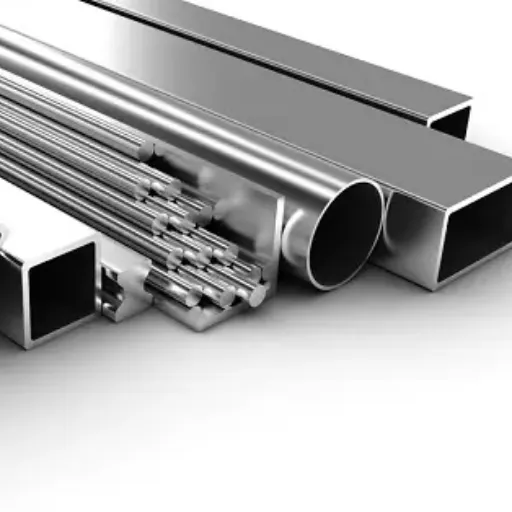
The recent innovations in stainless steel hardness go around advanced alloying techniques and surface treatments. These techniques have resulted in more durable and wear-resistant stainless steels, thus making them even more suited for demanding applications.
Advancements in Alloy Development
In the recent past, evolving alloy development has gained significant weight, as it has helped stainless steel perform well in diverse industries. The materials have a metallurgical advancement aiming to improve mechanical properties, their resistance to corrosion, and sustainability.
Latest Alloy Innovations
- Duplex Stainless Steels: Combine strength and stress-corrosion cracking resistance
- High-Temperature Alloys: Enhanced nickel content for power plants and aerospace
- Super Duplex (UNS S32750): Tensile strengths above 800 MPa (double that of 316)
- Advanced Coating Technologies: Reduce material waste and production costs
- Additive Manufacturing: Tailored components with precise specifications
A significant advance in stainless steel is the development of duplex stainless steels, offering stainless steel with grades of strength and resistance to stress-corrosion cracking that neither traditional an austenitic nor a ferritic stainless steel can give. In addition, the emergence of high-temperature alloys, including such elements as nickel, has allowed stainless steel to be adopted widely in power plants and aerospace applications, where heat resistance is paramount.
Technologies for New Hardness
Recent new developments in hardness measurement technologies gave rise to revamped testing of materials, thereby increasing precision and improving efficiency. One such new technique is the instrumented indention technique that offers secondary, more precise hardness measurements by continuously recording force and penetration depth during the course of testing, thus reducing human error while providing more detailed information about the mechanical properties of materials.
Advanced Testing Technologies
- Instrumented Indentation: Continuous force and penetration depth recording
- AI-Enabled Testing: Machine learning algorithms for data analysis
- Predictive Insights: Faster quality control and error reduction
- Real-time Analysis: Instant surface pattern inconsistency detection
Another breakthrough is the accommodation of AI and machine learning algorithms into hardness testers to fast-track data analysis and offer predictive insights, thereby making quality control exponentially faster and efficient. For example, AI-enabled kits can study surface pattern inconsistencies instantly, reducing erroneous outputs in industrial manufacture.
Reference Sources
-
Nickel Institute
- Source: Design Guidelines for the Selection and Use of Stainless Steels
- Why Reliable: This document is published by the Nickel Institute, a reputable organization in the field of stainless steel and nickel alloys. It provides in-depth guidelines on the properties, including hardness, of various stainless steel grades.
-
Ryerson Metal Resources
- Source: Understanding Martensitic Stainless Steel Grades
- Why Reliable: Ryerson is a well-known supplier of metals and materials. Their resources offer detailed insights into the hardness and applications of different stainless steel grades.
-
LinkedIn Articles on Stainless Steel Market
- Source: North America Stainless Steel Target Market Insights
- Why Reliable: This article discusses the market and industrial applications of stainless steel, including its hardness properties, making it relevant for understanding the target audience.
Frequently Asked Questions (FAQs)
How do alloying elements influence the hardness of stainless steel?
Various alloying elements such as chromium, nickel, and molybdenum are vital in hardening stainless steel. For example, chromium imparts corrosion resistance; it also strengthens and hardens the material. Additional elements like vanadium may serve to maximize hardness via precipitation hardening in high-grade steels such as 316L.
What is the difference in hardness between 304 and 316 stainless steel?
304 and 316 stainless steels are both austenitic grades, yet 316 stainless steel differs in hardness and corrosion resistance. With the introduction of molybdenum, 316 stainless steel attains higher hardness and strength and acquires resistance to pitting in chloride environments. Typically, 304 stainless steel measures approximately 70 HRB, whereas the hardness of 316 can be as high as 90 HRB based upon heat treatment and processing.
What is the Rockwell hardness test for stainless steel?
Rockwell hardness test is a generally used method in measuring the hardness of stainless steel. Utilizing either a hardened steel ball or a diamond indenter, an exact load is applied, and penetration depth is measured. Multiple scales are used to express the result, including Rockwell C (HRC) for harder materials and Rockwell B (HRB) for softer materials. The test proves useful when dealing with the hardness of alloyed and heat-treated stainless steels.
How does one increase the hardness of stainless steel?
To harden stainless steel, after being heat treated by some means like quenching and tempering or precipitation hardening, one might also consider using higher alloy content or choosing grades such as martensitic stainless steels that can become far harder.
What is the Vickers hardness scale for stainless steel?
The Vickers hardness scale is another test used to determine the hardness of materials and stainless steels. It uses a diamond pyramid-shaped indenter and applies a certain load, measuring the length or size of the indentation in the material. The Vickers hardness (HV) is particularly useful to measure hard stainless steels since it provides a more detailed picture of their hardness than other tests, such as that offered by the Brinell hardness test.
Ready to Select the Right Stainless Steel Grade?
Understanding hardness properties is just the first step. Consider your specific application requirements, environmental conditions, and budget constraints to make the optimal choice between 304, 316, and other austenitic grades.

